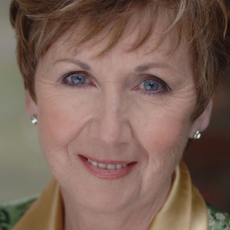Ann Murray - Brahms & Schumann: Lieder - SA-CD.net
World famous Irish
mezzo-soprano Dame Ann Murray retired from the Concert Hall in 2011, and now
(2013) she brings her long list of Lieder recordings to an end by returning to
the studio after a decade. She has compiled a fine farewell programme of her favourite
Lieder for us, which is accompanied by Malcolm Martineu, a pianist who has
played for her in many recitals. The recording also includes contributions by
some of her friends and family who are musicians in their own right - Benjamin
Appl (baritone), John Mark Ainsley (tenor), Johnny Langridge (tenor & Ann's
son) and Hester Dickson (piano & Malcolm's mother).
The lives
of Schumann and Brahms were interlocked in their careers and social life, with
Schumann's wife Clara as a central pivot. Schumann learned a great deal on
composing Lieder from Schubert, as did Brahms from Schumann. There are 26
tracks on this disc, and Dame Ann focusses on songs from after Schumann's
Golden Year of Lieder (1840) - 19 tracks, with the rest a wide-span selection
from Brahms' Lieder.
She chose
two major groupings from Schumann; Lenau's 'Poems of Mary, Queen of Scots', Op.
135 and Goethe's Lieder and songs from 'Wilhelm Meister', Op. 98a. Nikolaus
Lenau's poems describe in five stages, partly based on Tudor accounts of the time,
an account of Mary Stuart's fated life from her childhood in France with the
young Dauphin, her calling across the North Sea to be Mary the First of
Scotland, to her capture and beheading by her sister, Elizabeth the First of
England. Dame Ann's performance of arguably Schumann's most dramatically
powerful song cycle is as powerful as though she was in Mary's mind, so
musically profound is her investment of the Scottish Queen's tragedy. Dame Ann
is partnered superbly by Martineau, who makes Schumann's preludes, postludes
and atmospheric accompaniments into pianistic tone poems of themselves.
The set
of Goethe's 'Wilhelm Meister' songs (Schumann's Op. 98a) shows us that Dame
Ann's voice is still firm and flexible, if perhaps the vibrato is beginning to
loosen and top notes under pressure are slightly hard in tone. Whatever the
sounds of ageing may be, her joy at converting good-quality German poetry into
music with a whole palette of expression sounds undiminished.
Several
of these songs are for duets or solos by other voices. Sadly, nowhere in Linn's
packaging or website could I find indications of which singer was taking over
or joining with Dame Ann. Track 7, the 'Ballade of the Harpist' is sung by
German lyric baritone Benjamin Apl with a sonorous, warm tone against
Martineau's rippling harp imitation. Apl sings again on Track 9 as the Harpist.
Distinguishing the tenors is more difficult. I suspect that in Track 11,'Who
gives himself to loneliness' John Mark Ainsley becomes the Harpist. Track 12 is
a sparkling ripost from Ann in the Mezzo solo 'Not to sing in funeral tones'
which fizzes like a lieder-scherzo, followed on Track 13 with Ainsley's
poignant simplicity in 'From door to door will I steal'.
Track 15
is a touching duet for Mezzo and Tenor (probably Johnny Langridge with his
mother) from Schumann's 4 Duets Op. 78 no. 4, 'I thank you'. Probably they also
duet on Track 17, 'Family Painting' from 4 Duets Op.34 no. 4. Track 18, a
Rückert song from 'Poems from Love's Springtime' Op. 12 No. 12, 'Truly as the
sun shines' is a passionate love duet, between Dame Ann and probably Ainsley.
Track 19 is the last in the Schumann section; Minnespiel, Op. 101, No. 3 'I am
your tree' is for a solo tenor, probably Ainsley again. There are no clues
about where the pianist Hester Dickson joined in a piano duet!
The seven
Brahms songs are sung by Ann Murray as if she has absorbed them and polished
them with a combination of clear-eyed freshness and a whole career of
developing their meanings. Inevitably, the final song is the famous Lullaby
from 5 Songs Op. 40. It was genuinely composed for the birth of a second baby
to one of his friends, and Dame Ann and Martineau give it their all, making it
glow and sooth but never over-sentimentalising. A worthy ending to this moving
tribute for a phenomenal artist, who also is presenting it to her huge audience
of record collectors as a final gift.
Stereo mode was a revelation; Murray's voice and the
piano were louder and more convincing, with a laterally wider soundstage. The
piano had a larger virtual size and was clearly behind Murray, who was somewhat
right of the centre. The studio acoustic gave a spacious aura to the voice and
piano, with only a faint reverberation and decay. I would advise listening to
this disc in Stereo.
Despite
the thin paper with see-through of the very small print, the liner has an
extensive and excellent lesson about the music and the meaning of its poetry.
The absence of information about the guest artists was, however, frustrating;
it would not have been difficult to add stars to the track titles to indicate
which guest was taking part.
The Stereo track supports the magnificent
performances of a Mezzo-Soprano's farewell recording very well. This is the kind of disc which justifies the whole art of German
Lieder and will provide many happy hours of listening.


